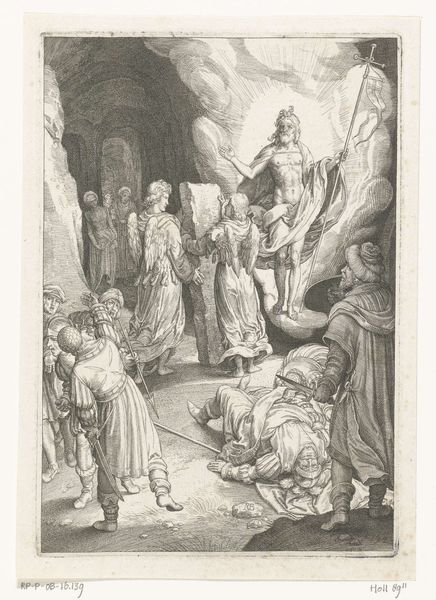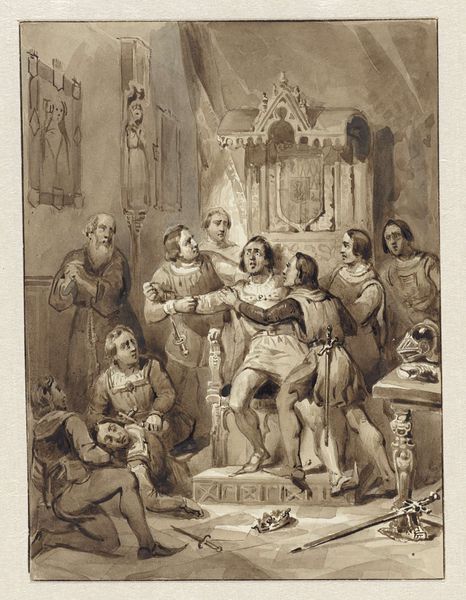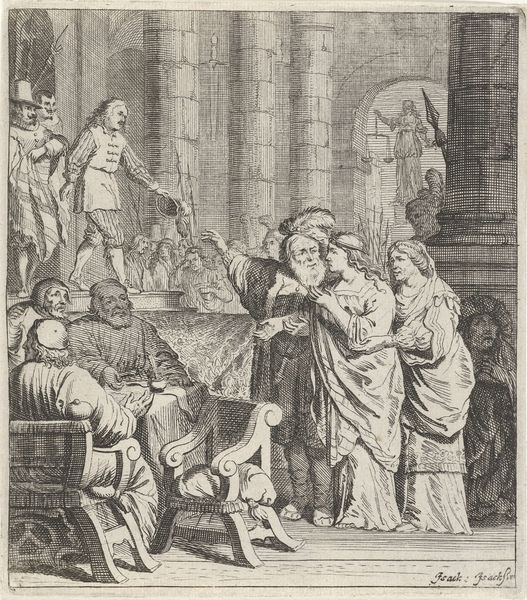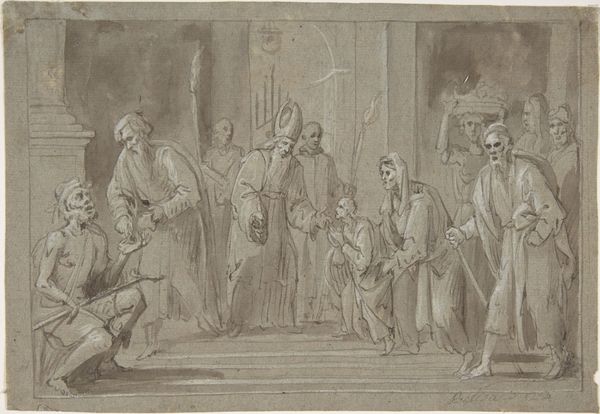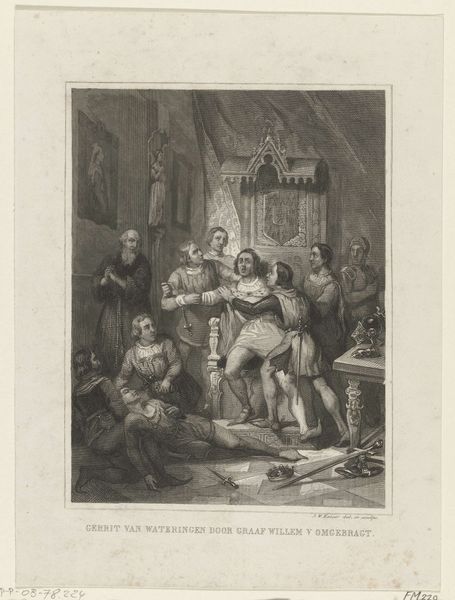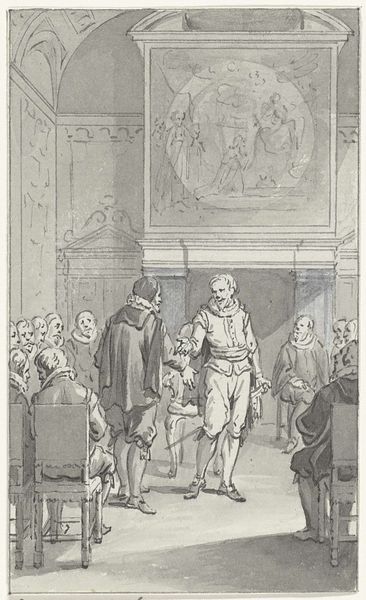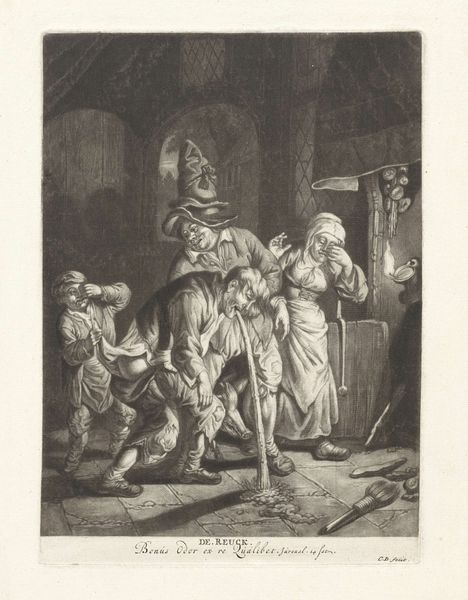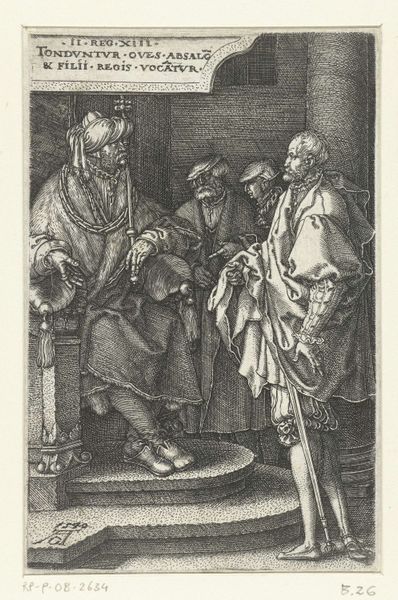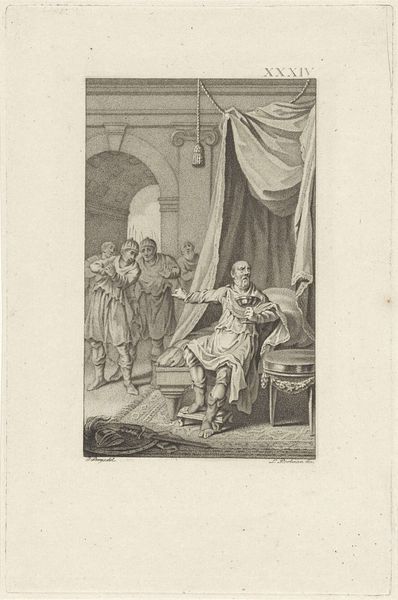
drawing, charcoal
#
drawing
#
charcoal drawing
#
figuration
#
11_renaissance
#
charcoal
#
history-painting
Dimensions: height 197 mm, width 141 mm
Copyright: Rijks Museum: Open Domain
Curator: Ah, what a dramatic scene. Immediately, the weight of impending doom hangs heavy in the air, doesn’t it? Editor: It certainly does. What we're looking at is a drawing, rendered in charcoal, titled "The Last Moments of Egmond in the Dungeon, 1568". Johann Wilhelm Kaiser made this emotive piece in 1852. It's currently held here at the Rijksmuseum. Curator: The dungeon is so effectively conveyed; you can almost smell the damp stone! It makes me reflect on all the unsung stories whispering within the foundations of establishments such as the Rijksmuseum itself. But tell me, is that priest offering some final sacrament or simply witnessing the count's end? Editor: That is a central question, isn’t it? This piece visualizes a fraught moment in Dutch history, the execution of Count Egmond. We must understand this event occurred amidst the Dutch Revolt against Spanish rule. He was a nobleman executed for treason—or perhaps a freedom fighter betrayed by political machinations, depending on your perspective. The priest stands as a figure of both solace and state-sanctioned execution. Curator: True, that sword looming in the corner sharpens the sense of betrayal. You mention differing perspectives, but what resonates deeply for me is Egmond’s rather graceful bearing. He's composed amid absolute despair; he holds what can only be a resigned acceptance of what comes next. Editor: That resignation, however, needs unpacking. Considering Egmond’s position and privileges, his ‘graceful’ acceptance might be a performance dictated by his social standing rather than pure stoicism. How do systems of power shape our very responses to oppression? The priest, the soldiers, the setting itself... It's all a meticulously crafted stage of dominance. Curator: Interesting, I do perceive this sense of controlled staging. And this begs us to remember how images and stories get created, particularly historical narratives like this, and which details are heightened or erased with time. The soft shading of the charcoal is very effective in conveying this staged manipulation. Editor: Precisely. And perhaps in grappling with these historical artworks, we come to terms not just with history but with our present, its own forms of resistance, acceptance, betrayal, and sacrifice. Curator: Indeed, we’re simply all just characters cast in a grand historical drama, searching for our cues within dimly lit dungeons, I imagine. Editor: It’s within these dimly lit dungeons of our shared history we uncover the power dynamics, challenging their stage direction for a brighter, more just future.
Comments
No comments
Be the first to comment and join the conversation on the ultimate creative platform.

